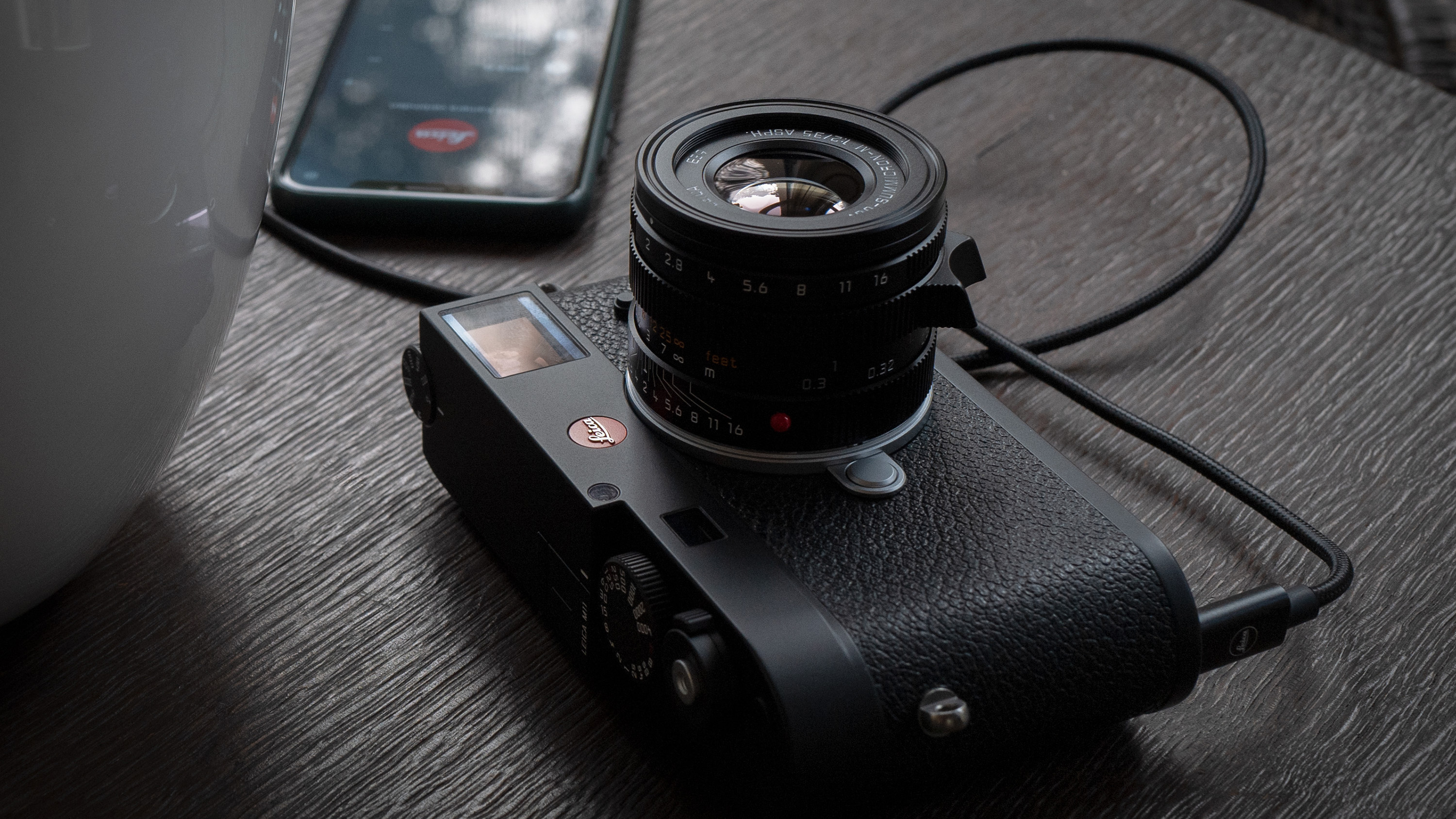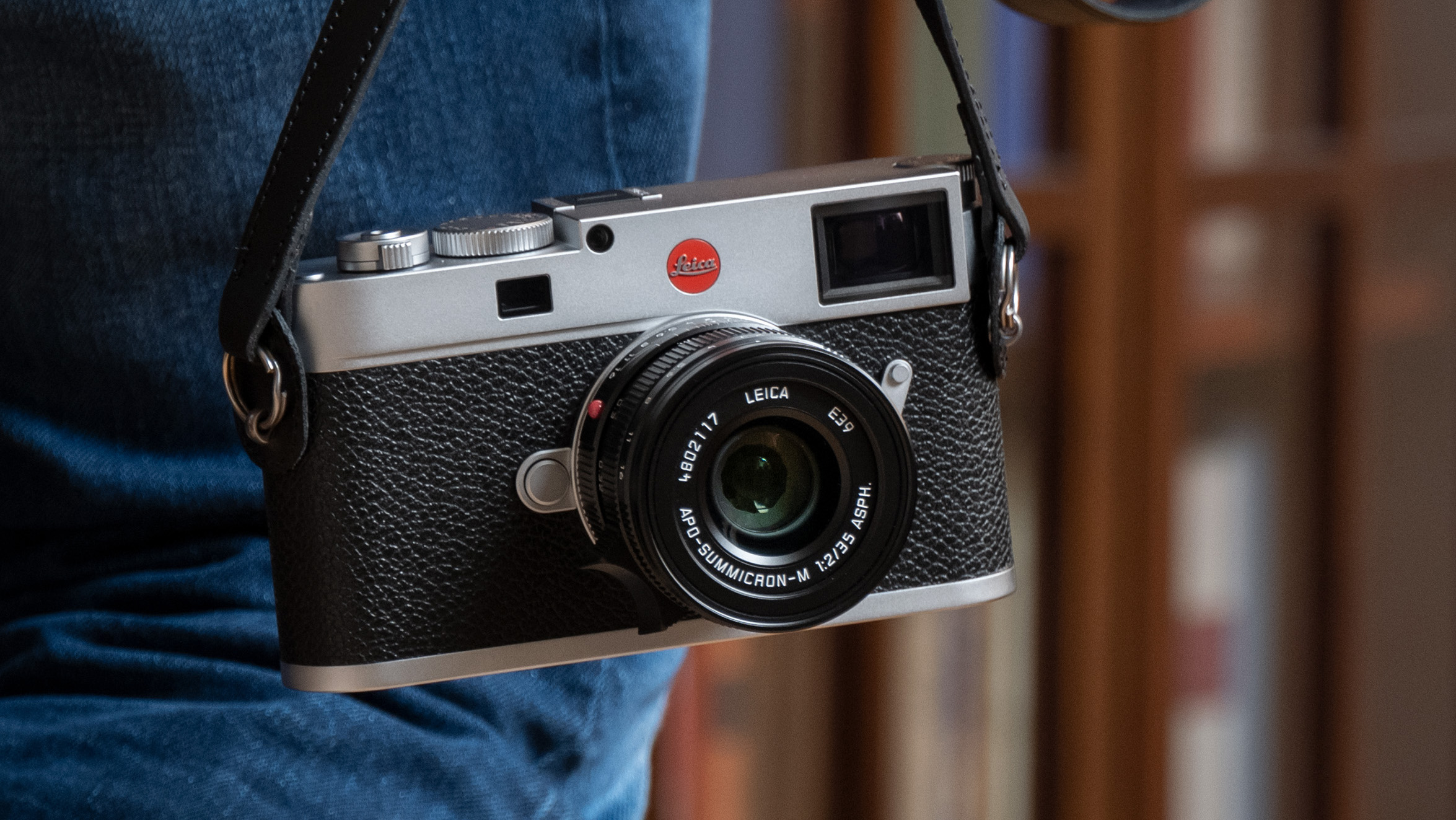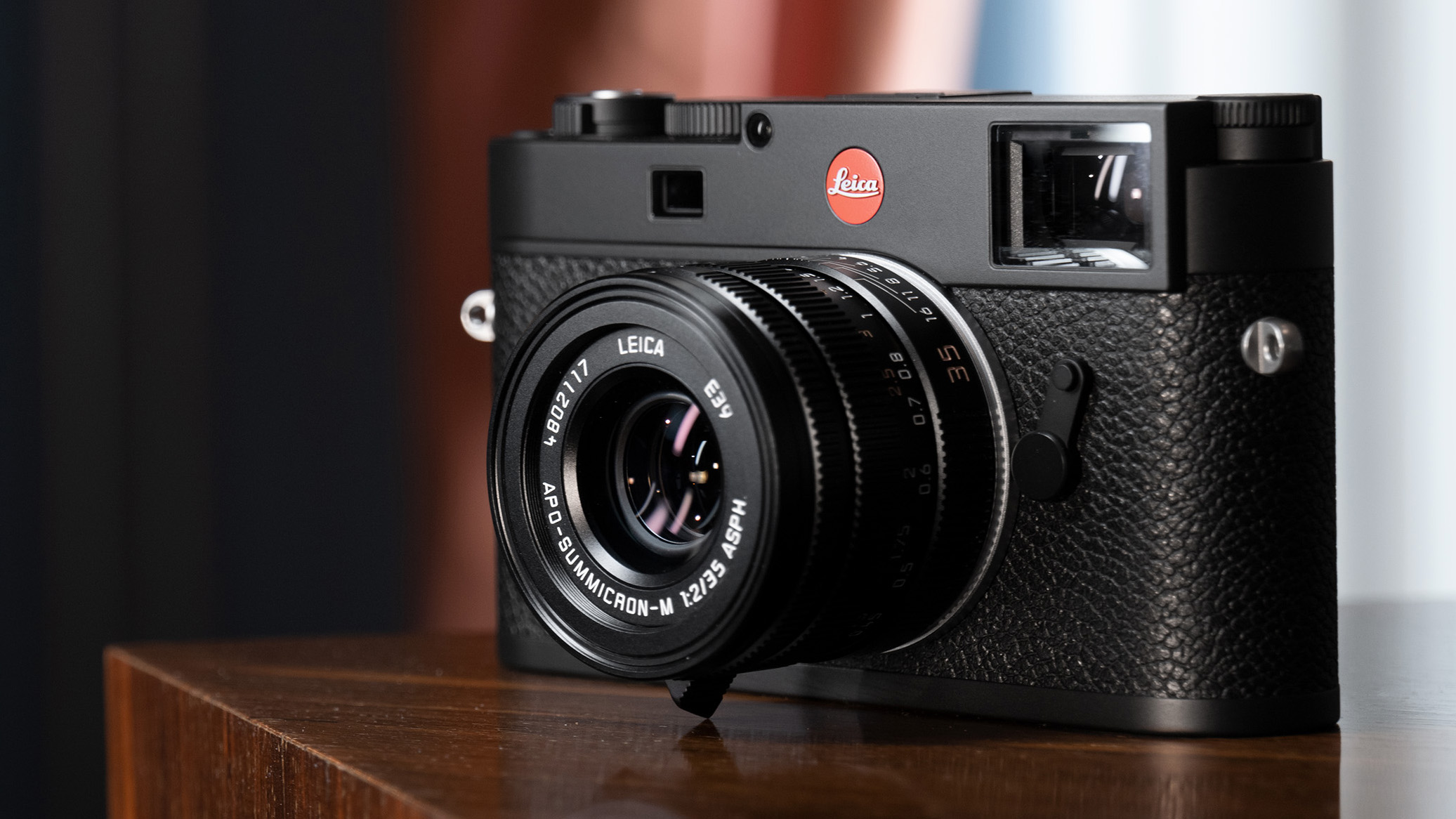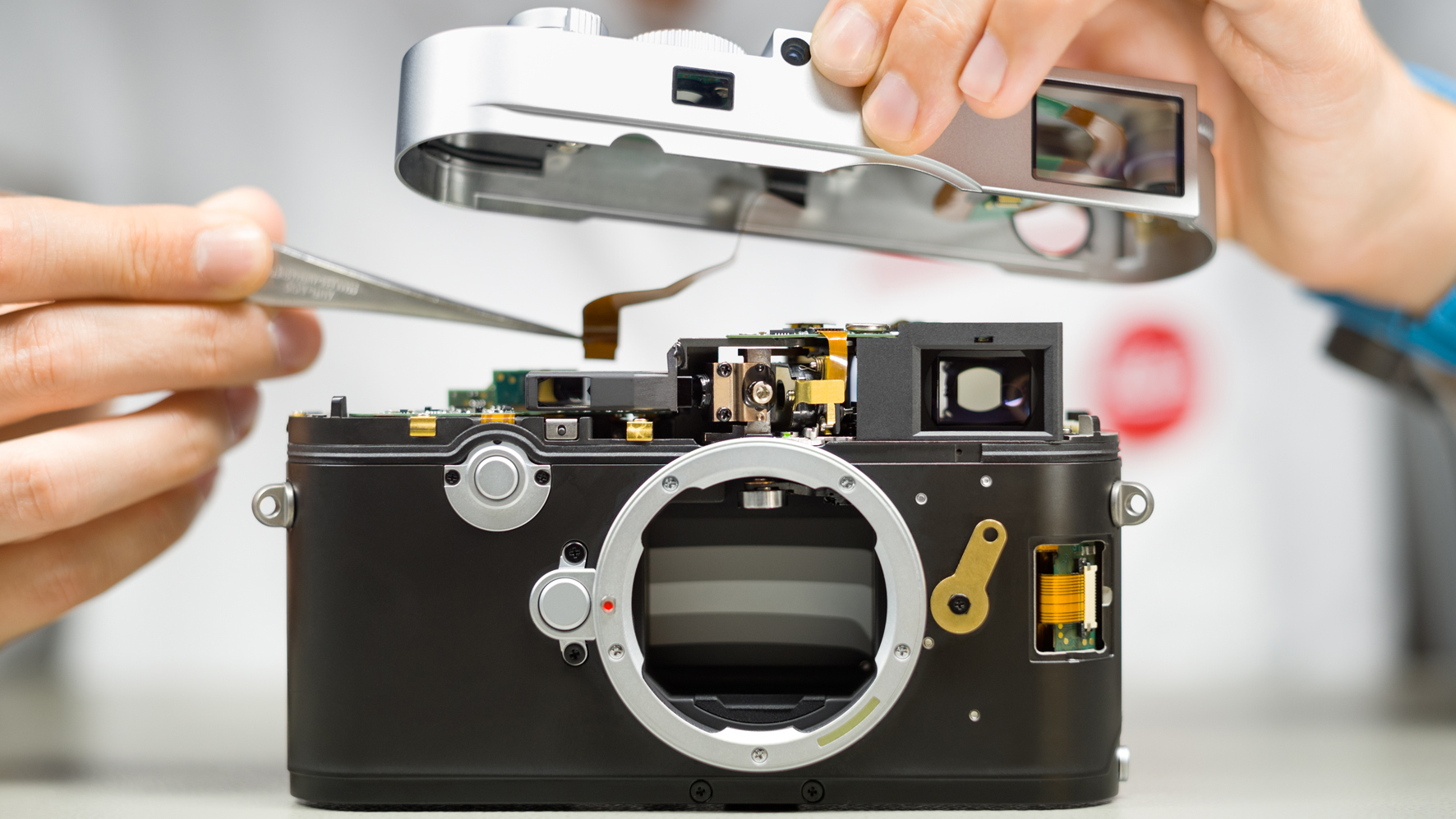Why the Leica M11 is a glorious relic in an age of camera phone convenience
Opinion: The M11 is a pricey but timely blast from the past

Five years isn't a long time in Leica-land, but the photography world has been turned upside down since the Leica M10 landed in January 2017. Since then, computational photography and AI editing have transformed amateur snapping – and that's why the new Leica M11 now stands out as a relic from a bygone age.
Yet the fact that the Leica M11 is a complete anachronism – a steam train in a world of Virgin Hyperloops – only heightens its appeal. This is a camera with no autofocus, let alone busy little algorithms piecing together the best bits from your burst of photos. But its manual-only shooting and rangefinder focusing preserve a style of taking photos that's the polar opposite of, say, Google's Magic Eraser.

Some will argue that Leica's M-series cameras are overpriced trophies for nostalgists, or badges of honor for wealthy camera snobs. But while it's hard to disagree that the Leica M11 is overpriced at $8,995 / £7,500, it's also possible to appreciate that it exists. I'll probably only ever own quartz watches, but that doesn't mean I can't dream of buying a hand-wound Tag Heuer Carrera.
The difference between the Leica M11 and a lot of other vintage tech is that its nostalgia appeal isn't just skin-deep. It's a perfectly-evolved tool that adds modern conveniences in just the right places, and offers something genuinely different from anything else out there. And with a direct lineage that stretches back to the Leica M3 in 1954, it's also pretty unique in the world of consumer tech.
A connected experience
So what makes the Leica M11 special? Full disclaimer: we haven't yet fully tested one, so we can't yet comment on the performance of its new 61MP full-frame sensor. But the appeal of the M-series concept is in its size, rangefinder focusing and simplicity, and all of those are still intact on Leica's new model.
Like its predecessors, the M11 offers a classic rangefinder experience with an optical viewfinder. Rather than using an autofocus system to lock onto your subject, its viewfinder has a central window that brings together two ghost images. Turn the focus ring to bring these two images together, and when they line up perfectly, you're in focus.


This sounds complicated, but it quickly becomes second nature – and it brings a couple of advantages. First, the optical viewfinder lets you see around the edges of your frame, which can make you feel more connected to a scene compared to staring down the barrel of an EVF. Also, thanks to the lens's depth-of-field scale, you can use 'zone focusing' to help you shoot quickly without needing to focus at all.
Sign up for breaking news, reviews, opinion, top tech deals, and more.
It's a more complex point-and-shoot experience than a phone, but it prompted legendary street photographer Henri Cartier-Bresson to call his Leica rangefinder "the extension of my eye". The M-series strips away buttons, settings, distractions and automations, while keeping you connected to the traditional photo-making process – it's good to see that survive in a world of computational photography, despite the M11's prohibitive price tag.
And the M11 is much more than just a fusty throwback; after all, you could just buy a second-hand Canon AE-1 film camera for a truly vintage experience. For the first time on an M-series camera, the M11 comes with 64GB internal storage – a feature that continues to be strangely lacking on most mirrorless cameras – which helps to compensate for its lack of a second card slot. Its new 61MP sensor also gives it a very high resolution for a camera of this size, and gives you the option of shooting 36MP or 18MP snaps using the full sensor area (albeit with pixel binning).
Perfectly formed
The other benefit of the Leica M11's manual-only approach is size. Because Leica's rangefinder lenses lack autofocus motors, and because the camera itself doesn't have features like in-body image stabilization, it's very compact for a full-frame camera. The size difference isn't quite as noticeable compared to today's mirrorless cameras as it was back in the SLR days, but the M11 is still half the thickness of a Sony A7 IV, with much smaller lenses.
This makes it about the same size as the Nikon Z fc, another retro camera with a more sensible price tag, but one that has a smaller APS-C sensor and inferior lenses. A big part of the Leica M11's appeal is undoubtedly its stunning, yet tough, design, but this again serves a practical purpose – it's ideal for street and reportage photography.

While the Leica M11 is certainly an indulgence, that price tag can at least in part be rationalized with the knowledge that this is a camera that's been built to last a lifetime. The only odd thing is that the black version's housing is partly made of aluminum, as opposed the silver mode's classic brass-and-magnesium construction, yet the two models cost the same.
Despite this oddity, the M11's heritage makes it pretty unique in the world of consumer tech. There are very few current lines with a lineage that stretches directly back to the 1950s – a quick poll of the TechRadar team raised the Braun LE01 wireless speaker (a resurrection of its LE speakers from the 50s), the B&O Beolit 20 (based on the Beolit radios of the 1930s), and the Klipsch Heritage Heresy IV (a successor to the 1957 loudspeaker) as similar examples. Yet none of those are quite as iconic as the Leica M-series.
Keeping the manual flag flying
Does this mean we recommend buying a Leica M11? No – that would be ridiculous given its price tag, and as mentioned we haven't yet put it through its paces on the streets. Realistically, the sensible choice for anyone who wants to enjoy the rangefinder experience with modern conveniences is the Fujifilm X-Pro3 – you can buy five of those for the price of an M11, and the X-series has some lovely prime lenses.
But this also doesn't mean that, in a world of falling camera sales and increasingly homogenous shooting experiences, we can't celebrate the existence of the Leica M11. Sure, it's only able to justify its existence by mining its luxury brand and heritage, but it's no cynical cash-in either. It's a subtly-evolved photography tool that still has merit in 2022, almost 70 years on from its arrival.

In many ways, this all makes the M11 the anti-Google Pixel. From the Google Pixel 4 in 2019, Google pioneered a form of computational photography, with features like Night Mode, that completely automates the snapping experience.
Today's camera phones are brilliant tools for most people, but that needn't be at the expense of niche classics that are much more challenging to master, and a lot more satisfying. Despite its slightly ridiculous price tag, it's good to see that the Leica M11 remains a torch-bearer for that kind of shooting experience.
- Check out our guide to the world's best mirrorless cameras

Mark is TechRadar's Senior news editor. Having worked in tech journalism for a ludicrous 17 years, Mark is now attempting to break the world record for the number of camera bags hoarded by one person. He was previously Cameras Editor at both TechRadar and Trusted Reviews, Acting editor on Stuff.tv, as well as Features editor and Reviews editor on Stuff magazine. As a freelancer, he's contributed to titles including The Sunday Times, FourFourTwo and Arena. And in a former life, he also won The Daily Telegraph's Young Sportswriter of the Year. But that was before he discovered the strange joys of getting up at 4am for a photo shoot in London's Square Mile.